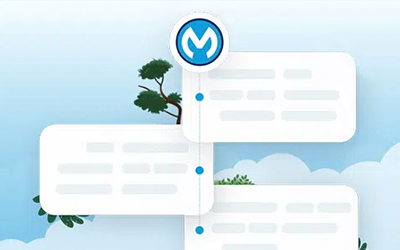MuleSoft will end support for Mule 3.x on the 20th of March, 2024. This means that updates will stop, and MuleSoft will no longer patch vulnerabilities, leaving your business exposed to myriad issues. At the time of publishing this blog, the deadline is six months away. If you still operate on Mule 3, then end-of-support might seem like a distant, necessary upgrade, but I encourage you to view it as an opportunity for innovation.
With six months, you have the time to develop a planned Mule 4 migration that considers your current architecture and builds a new solution that aligns with your business goals.
Leaving your migration too long means more strain on your technical resources which can put you at an economic disadvantage. Security vulnerabilities, compliance challenges and performance issues will likely also disrupt your business. Most of all, you miss opportunities to improve your operations and enhance customer experiences sooner than if you delay this migration.
There are many more convincing reasons to migrate to Mule 4. It includes capabilities previously unavailable in Mule 3, and these unlock various benefits for your business and support your digital transformation efforts. With enhanced features and efficiencies, Mule 4 gives your team the tools to tackle complex challenges and transform your business through integration. Here are 11 reasons to prioritise your migration.
1. Reduced costs
Mule 4’s enhanced connectivity ensures seamless integration with various systems, which eliminates the need for additional software or manual work. As a result, your organisation benefits from faster decision-making, reduced data errors, and streamlined workflows.
Modernising your systems on the Mule 4 platform eliminates redundancies, leading to substantial cost savings. By consolidating legacy systems, your business can reduce the Total Cost of Ownership (TCO). For example, when we implemented a solution using Mule 4 for one of our clients, they reduced shipping time and the associated costs. They reinvested these savings into growth initiatives.
2. Increased revenue
With Mule 4’s integration capabilities, your company can tap into data that may have previously been difficult to access or combine. Gaining access to this data enables you to tap into new marketplaces, introduce services, or improve processes that impact the employee and customer experience. Migrating to Mule 4 is an opportunity to innovate and build solutions that address your unique business needs and capitalise on market opportunities.
Furthermore, in another example from one of our clients, we used Mule 4 to optimise inventory distribution across all store locations. Demand predictions and real-time data collated using Mule 4 reduced overstock and stockouts, enhancing sales and increasing revenue.
3. Simplified error handling
Error handling has received a refresh to simplify the process for developers and improve uptime for your business. Mule 3 did not have the tools to handle and resolve semantic errors, so users had to review these themselves. Mule 4 introduces a unified error-handling concept that covers various errors that could impact your systems. You can also set up automatic alerts for your team, so they can identify and resolve issues earlier.
4. Improved customer experience
Your ability to view and deliver real-time updates can significantly impact your company’s bottom line. For example, with Mule 4, your business can update pricing and product inventory in real time, which means your team and customers always have the latest information. Such efficiency has the potential to improve sales.
Beyond just numbers, real-time responsiveness positively impacts customer satisfaction. Customers today appreciate instant access to the latest offers and accurate pricing. With Mule 4, you gain the capabilities to cater to this demand, meaning that your company can foster stronger customer relationships, promoting loyalty and repeat business.
5. Supply chain efficiencies
Mule 4’s capabilities enable you to maintain and optimise your supply chain. For example, we have seen organisations improve the speed of their deliveries, which reduces the associated costs. By leveraging Mule 4’s integration capabilities, these businesses have achieved faster deliveries and, as a direct consequence, experienced a significant reduction in logistical and holding costs.
More efficient distribution reduces lead times, meaning products reach the market or end customers faster. Speed minimises inventory holding duration, leading to reduced costs, and ensures that products are available when customers demand them. As a result, your organisation could see increased product turnover rates.
6. New self-tuning engine
Mule 4 includes a self-tuning engine that automatically manages resources. The self-tuning engine scales based on available resources and workload, ensuring the platform operates efficiently. By automatically managing resources such as exchange patterns, threads and processing strategies, your team can experience improved performance, especially during peak demand times.
7. Streamlined connectivity
Mule 4 elevates connectivity with enhanced connectors and operations, streamlining the integration process across various systems. Whether your team needs to connect legacy systems, databases, or modern SaaS applications, Mule 4 offers out-of-the-box connectors optimised for performance and ease of use. So, you can establish connections faster, reduce the resources traditionally spent on building custom integrations and break down data silos.
Mule 4 helps your team maintain consistent integration practices by ensuring consistent data handling, security, and error management. This cohesive approach not only streamlines the development process but also bolsters the reliability of your integrations.
8. Dynamic data streaming
Handling extensive datasets has historically posed challenges for many businesses. Mule 4 includes dynamic data streaming that reduces the memory footprint, ensuring that even data-intensive tasks remain performant and resilient.
The efficiency brought about by dynamic data streaming means businesses can now tackle larger datasets without the fear of overwhelming the system or experiencing performance issues. This capability is essential for companies dealing with big data or extensive transaction records. In this regard, Mule 4 ensures seamless and efficient data processing without compromising system availability.
9. Improved integration with a re-architecture approach
Boston Consulting Group found that 70% of digital transformations do not meet their objectives. These efforts often fall short of expectations due to inadequate integrations.
Re-architecture refers to the process of restructuring and updating the underlying system to improve performance, functionality, and adaptability. Taking a re-architecture approach when migrating to Mule 4 enables you to leverage the full potential of the Anypoint Platform’s capabilities, optimise your APIs and reduce long-term costs. Moreover, re-architecting in Mule 4 lays the foundation for a resilient platform tailored for sustained growth, translating to long-term cost benefits. It’s not merely about matching competitors but innovating to stay ahead.
10. DataWeave as the standard language
In Mule 4, DataWeave is now the default expression language. Your development team no longer have to juggle different languages or rely heavily on Java hard coding and Groovy scripts. This change enhances the platform’s data processing capabilities, performance and user experience.
This change simplifies the development process, improves time-to-market for integration projects and ensures more reliable, maintainable, and scalable solutions for your business. When your team grapples with multiple languages, integrations take longer to build and could introduce errors or inefficiencies. With DataWeave, developers can focus more on crafting optimal integration strategies rather than grappling with language-specific limitations.
11. Optimised CI/CD process
Continuous integration and continuous deployment (CI/CD) are critical to maintaining and improving integrations. Mule 4 streamlines this process by automating build and deployment to ensure existing integrations readily adapt to changes. This optimisation supports digital transformation, allowing you to harness the full potential of your current integrations.
When combined with tools such as MakeSene’s customisable application for code scanning, your business can further refine integrations, turning them into agile and robust assets.
Conclusion
Even though the impending deadline makes Mule 4 a necessary upgrade, the platform offers various benefits that will drive your digital transformation and modernise your processes. I have seen businesses achieve real results with this platform across multiple facets of their operations, from streamlining integrations and boosting revenue channels to driving supply chain efficiencies and reducing costs.
Migrating to Mule 4 is not just about using the latest technology but strategically positioning your business for sustained growth and resilience. For organisations planning a digital transformation, Mule 4 provides the tools needed to optimise integrations and underpin your success now and in the future.
Why choose MakeSense as your Mule 4 migration partner?
With the end of support for Mule 3.x set for March 2024, now is the opportune moment to upgrade to Mule 4. Migrating can be challenging, but this migration is not just a tech upgrade, it’s an opportunity to improve your operations and deliver more value to your customers.
MakeSense can guide you through this transition. Our dedicated team, with a track record of excellence and a deep understanding of Mule 4, will ensure a seamless migration that ensures you get the most from Mule 4 while maximising your current investments.
Please visit our Mulesoft Upgrades page for more on our capabilities and to download our free guide about the Mule 3 to 4 migration.









